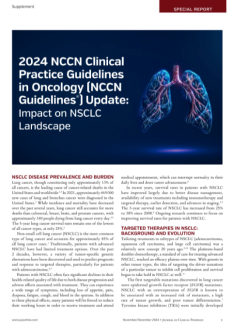Early Measurable Residual Disease Assessment Predicts Survival in Patients With Mantle Cell Lymphoma
Patients with mantle cell lymphoma (MCL) can benefit from measurable residual disease (MRD) assessment during induction therapy, with the timing and kinetics of MRD negativity significantly impacting prognosis and treatment strategies, according to study results published in Annals of Hematology.
MCL, a B-cell malignancy characterized by the t(11;14) translocation, has seen significant advancements in treatment, particularly with the introduction of rituximab and cytarabine-based therapies. However, predicting long-term outcomes remains a challenge.
“Our current focus is on determining the most appropriate time points for MRD assessment and understanding the impact of MRD kinetics on patient outcomes,” researchers explained. “Additionally, we aim to delve into the potential implications of MRD dynamics for guiding treatment strategies across various patient subgroups in MCL.”
The researchers retrospectively analyzed data which included patients who met World Health Organization diagnostic criteria for MCL and had available bone marrow MRD data. MRD was assessed at baseline, after the second and fourth cycles, post-induction, and every 6 months during maintenance therapy using multiparametric flow cytometry.
Among the cohort, 75.5% achieved MRD negativity at some point during induction therapy, with 41.6% reaching negativity after 2 cycles, 48.1% after 4 cycles, and 10.4% after 6 cycles. MRD assessment at 4 cycles demonstrated the highest predictive accuracy for both progression-free survival (PFS) and overall survival (OS), with hazard ratios of 4.2 and 3.2, respectively.
MRD negativity rates varied by treatment regimen, with the highest rates observed in patients receiving high-dose cytarabine-based immunochemotherapy. While MRD negativity was generally associated with better survival outcomes, its impact was limited in patients with blastoid or pleomorphic MCL. Additionally, the duration of MRD negativity played a critical role in prognosis—patients who maintained MRD negativity for over a year had significantly longer PFS and OS compared to those who lost MRD negativity within a year.
While early MRD negativity was linked to better outcomes, the speed of achieving negativity did not significantly affect survival. High-risk patients tended to reach MRD negativity more quickly, but this rapid response did not translate into a clear survival advantage.
“MRD assessment can be used in a complementary manner with traditional efficacy assessments, especially in patients exhibiting [partial remission],” concluded the study authors.
Reference
Yan Y, Huang Y, Yu Y, et al. The optimal time and clinical implications of measurable residual disease detection in mantle cell lymphoma. Ann Hematol. Published online February 25, 2025. doi:10.1007/s00277-025-06246-9



















